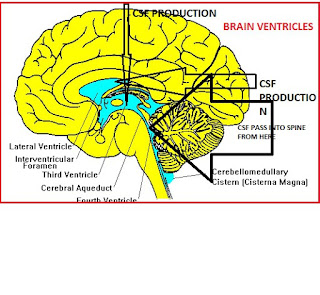HIGH CALCIUM-PAGET'S DISEASE
Calcium is an important mineral in regulating many physiological activities in our body system.
If the serum calcium level is above the normal range (8 to 10mg/dl or 2 to 2.5 mmol/L) the condition is known as Hypercalcemia
In this article, we are mainly going to see hypercalcemia due to Paget's disease.
Serum calcium level is raised alarmingly due to many causes such as over consumptions of calcium supplementations and comorbidities such as milk-alkali syndrome, overactivity of the parathyroid gland, use of certain drugs like thiazide diuretics, an oversupply of vitamin A and D.etc, etc.
But there are certain cancers such as cancerous neoplasms, Paget's Bone Disease, Addison's Disease, Zollinger-Ellison's syndrome, and Sarcoids can also raise serum calcium level alarmingly as a cancer marker.
In this article, we are mainly going to see hypercalcemia due to Paget's disease.
Serum calcium level is raised alarmingly due to many causes such as over consumptions of calcium supplementations and comorbidities such as milk-alkali syndrome, overactivity of the parathyroid gland, use of certain drugs like thiazide diuretics, an oversupply of vitamin A and D.etc, etc.
But there are certain cancers such as cancerous neoplasms, Paget's Bone Disease, Addison's Disease, Zollinger-Ellison's syndrome, and Sarcoids can also raise serum calcium level alarmingly as a cancer marker.
1.Paget's Bone Lesions:-
This is a condition in which the normal bone tissue recycling process by the body is modified and the bone become fragile with painful lesions.
Paget's disease mostly occurs at the skull, pelvis, spine, breast, and legs.
The common sign is the formation of oozing eczema-like lesions with scaly skins at the site. If it is at the breast the nipple skin becomes hardened and scaly.
The doctor can diagnose if the above symptoms persist with x-ray alone or with blood tests and bone scans.
A blood test at the beginning will show the raising level of an enzyme known as Serum Alkaline Phosphate (SAP).SAP is normally produced by the bone cells to wear out the old bone cells to be replaced by new cells without affecting the serum calcium level.
But in diseased bones the cells double their production of SAP and the formation of new bone cells (bone sorption or formation) is overwhelmed by bone resorption or deformation and the malignant condition is known as Paget's disease.
At the beginning of the disease the calcium levels may be normal but in due course of time the calcium level becomes alarmingly raise due to severe and uncontrolled bone resorption. Some times the body uses the old bones to form abnormal new bones without using serum calcium.
Hence in blood test high levels of SAP are the indicator marker for Paget's disease.
The symptoms are very similar to arthritis and usually occur as joint pain, redness of the skin, swelling, and tenderness of the skin.
Paget's disease differs from osteoporosis, that in osteoporosis the bone becomes weakened by decreased bone mass and skeletal architecture due to focussed bone resorption, and the serum calcium level rises.
In Paget's disease the body absorbs old bones to remodel and form irregular bones without using serum calcium and phosphate.
Paget's disease may cause several complications including cancer as follows:-
1.Hearing Loss
2.Arthritis
3. Cardiac or heart problems
4.Nerve problems
5. Sarcoma but the possibility is 1 in 100
6.Tooth Problem
7.Vision problems
Paget's disease differs from osteoporosis, that in osteoporosis the bone becomes weakened by decreased bone mass and skeletal architecture due to focussed bone resorption, and the serum calcium level rises.
In Paget's disease the body absorbs old bones to remodel and form irregular bones without using serum calcium and phosphate.
Paget's disease may cause several complications including cancer as follows:-
1.Hearing Loss
2.Arthritis
3. Cardiac or heart problems
4.Nerve problems
5. Sarcoma but the possibility is 1 in 100
6.Tooth Problem
7.Vision problems
Causes
Doctors believe that a measles attack at the childhood age may cause Paget's disease later on.
Treatments
Treatments can control the progression of the disease but will not bring a full cure.
Bisphosphonates such as Etidronate and Pamidronate can be the drugs along with aggressive intake of Calcium and vitamin D
Etidronate can be given either by oral or IV route
Pamidronate is the drug of choice for those who prefer the IV routes.
It is recommended for the age between 50 to 70 years 1000mg of calcium and 700 units of vitamin D per day should be given while taking bisphosphonates provided that hypercalcemia and hyperparathyroidism are ruled out.
For the age group above 70 years vitamin D should be given at the rate of 800 units per day.
Bisphosphonates and calcium should be given with a time interval of at least two hours as calcium may interfere with the absorption of oral bisphosphonates.
In both, the above cases calcium and phosphorous should be administered if the condition is not associated with hypercalcemia and hyperparathyroidism.
In both, the above cases calcium and phosphorous should be administered if the condition is not associated with hypercalcemia and hyperparathyroidism.
Bisphosphonates can inhibit the bone resorption process by reducing the functions of osteoclasts and the formation of hydroxyapatite crystals in remodeling the bones.
Also bisphosphonates reduce the reabsorption of calcium and phosphates by the kidneys and increase their excretion.
Also bisphosphonates reduce the reabsorption of calcium and phosphates by the kidneys and increase their excretion.
Side Effects:-
1. Pain in the pagetic lesions is often experienced
2.Nephrotoxicity (Kidney Failure)
There are other drugs such as calcitonin, gallium nitrate plicamycin that can also be used to treat hypercalcemia associated with Paget's Disease.








